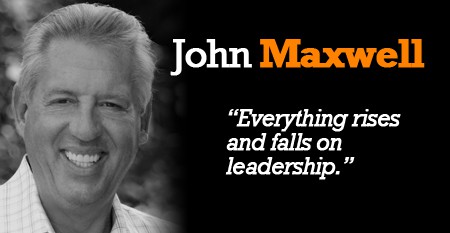If you’ve ever watched an episode of NBC’s “The Office” you know exactly what unproductive meetings look like. The tragic news is many real-world meetings too closely resemble a fictional Michael Scott get together. Stories of “death by meeting” is a well-represented part of corporate folklore for good reason – unplanned, unnecessary, uninspired, or otherwise unproductive meetings are a colossal waste of time and resources. In today’s post, I’ll provide you with 10 steps to creating meetings that produce real results.
Over the years I’ve found that you can tell quite a bit about a person by how many meetings they call or attend. I have consistently found the most productive people call very few meetings, and likewise, they rarely attend meetings where their presence isn’t absolutely necessary. Whether meetings are held at the board, executive, management or staff levels, or whether they are small project related meetings or large company-wide meetings, the same basic principles apply to make meetings effective.
Early in my career, I worked for a company where the CEO loved to have meetings. Meetings were held ad-nauseam about virtually every topic under the sun. Mostly we held meetings for the sake of meetings for one reason: Our CEO was a poor leader who couldn’t make decisions. Regrettably, these meetings rarely resulted in anything being accomplished. Because the meetings were poorly conceived and poorly facilitated, it turned out that most meetings just ended-up being rehashing sessions for the subjects not resolved in prior meetings – a theme most of you are probably all too familiar with.
Unproductive meetings not only serve little purpose, but they waste one of the most precious resources that a company has…time. One of the biggest mistakes an organization can make is to take its top talent away from productive activities and sequester them away for a mind-numbing babble session. Bad meetings are not only a productivity drain, but they also can cause a decline in morale and a lack of confidence in leadership.
I recently read a brilliant Kindle book titled: Read This Before Our Next Meeting by Al Pittampalli (@Pittampalli on Twitter)- I highly recommend this book. Al’s book is a fast read that absolutely nails the problem with most meetings, which is: “most meetings delay decisions rather than enable them.” The following excerpt is representative of what you’ll find between the covers of Al’s book:
Q: “What if I end up making a decision that not everyone agrees with?”
A: “Congratulations are in order. You’re a leader.”
The simple truth of the matter is that most meetings are not productive – they kill productivity. If leaders would spend more time leading and less time presiding over useless meetings the world would be a better place. The reality is that there is no excuse for holding a non-productive meeting. I won’t attend a meeting unless it is a good use of my time. You won’t see my smiling face in attendance at a meeting unless I know why the meeting is being called, who’s going to be in attendance, what the objectives (preferably hard deliverables) are for the meeting, and unless an agenda has been circulated in advance of the meeting allowing for proper preparation.
A leader’s role in a meeting is absolutely critical. A meeting isn’t an excuse to pontificate from the bully-pulpit, but to listen, extract information and gather intelligence. A leader’s role is not to be right and to try and convince attendees they should be in agreement, but to seek the right outcome regardless of whether dissenting opinions exist. Once everyone in attendance is aligned around the expected outcome for a meeting, the leader’s role should quickly transition into observation and facilitation mode (mediation mode only if necessary). Again, the end game is to make decisions, which drive actions that are in alignment with the desired outcomes – it’s just not that hard…
While Al’s book calls for a meeting revolution, the truth of the matter is that meetings are not going to disappear, so rather than call for an end to meetings, let’s focus on how to make them productive. I’ve led meetings according to a standard for a number of years now based on 10 simple rules.
Following is a more detailed breakdown of Myatt’s 10 rules for productive meetings:
- Culture: Create a culture where meetings are the exception and not the rule. When meetings are a rare occurrence the laws of scarcity will apply causing them to be valued as a highest and best use activity and not a nuisance. 80% of meetings never need to take place, so invest your energy in the 20% that do. If leadership doesn’t adhere to this standard then it will be impossible for the rest of the company to do so.
- Purpose: Some meetings are strategic and some are tactical – know the difference and don’t confuse the two. Remember, the purpose of a meeting is to create solutions – not problems, and to alleviate frustration – not cause it. This only happens through some form of value creation, and value is created by action. Meetings should not be held to report things, but to do things. Discussing a problem only adds value if the discussion leads to solving the problem. Hoping for an opportunity is not the same thing as creating one. Ideating is not innovating. The bottom line is meetings that don’t drive action are useless – no exceptions. (see deliverables below).
- Scheduling: I’m not a big fan of impromptu meetings (I refer to these as “drive-bys”). Creativity and innovation are stimulated by structure, not stifled by it. If the subject is worth addressing, it is worth planning for and preparation takes time. A detailed agenda for a meeting should be circulated in advance to all attendees so that they have time to prepare to make a valuable contribution. Lastly, all meetings need to have a start time and an end-time. Don’t abuse other people’s time and expect them to appreciate you for it.
- Deliverables: If the objectives for the meeting are not clearly articulated as a defined set of deliverables your meeting is not worth having. The purpose of a meeting is to accomplish something, and you can’t accomplish something if that something is vague, ambiguous, ethereal or has not been defined to begin with. Set individual and collective expectations ahead of the meeting. Remember, the richness of meetings can be correlated in direct proportion to the amount of work done prior to the meeting.
- Mindset: Meetings must have a relaxed, non-intimidating, and professional atmosphere. If candor and trust aren’t fostered within a framework of accountability, no amount of talking will overcome the tension and animosity always lingering just beneath the surface. Again, the purpose of a meeting is to be productive – to actually accomplish something. Leave the political correctness at the door. Meetings aren’t for coddling, and neither should they resemble a dance contest. Meetings must be challenging, welcome dissenting opinions, and encourage candid discourse. If people know that they are valued, respected and won’t be publicly embarrassed they will come prepared to deliver.
- Attendees: Too may people equals a circus and not a meeting. Other than a shareholder meeting, Christmas Party, an organizational (department, division, or company-wide) gathering, or other special events, meetings should be limited to 10 or fewer attendees. Not everyone can or should attend a meeting, and far too many people receive invitations to meetings for no other reason than to appease their fragile egos. Don’t invite people to a meeting who have nothing to contribute, and don’t hold a meeting unless the key contributors can be in attendance. If a key person is not able to attend the meeting, reschedule for a time when they can be in attendance. If you’re coming to a meeting not prepared to make a valuable contribution why are you coming?
- Leadership: Someone must be in charge of the meeting. All meetings should have a meeting chair who’s responsible for keeping the meeting on point, on schedule and achieving the meeting objectives. Bad meetings are a result of bad leadership.
- Focus: Phones need to be turned off. Nothing can be accomplished when people are not giving 100% focused attention to the issue at hand. If a meeting is important enough to attend, it should demand the participant’s full attention.
- Location: Don’t fall into the trap of going off-site unless it is absolutely necessary. Off-site meetings are expensive not only in terms of the hard dollars spent on facilities but also in terms of the commute time to and from the meeting. You should have the discipline to use your facilities in an uninterrupted fashion. Make it known that meetings are not to be interrupted unless it is an emergency (an “emergency” needs to be defined as both urgent and important).
- Assess and Evaluate: The meeting chair should conduct a critical post-meeting analysis to determine what went well, what went wrong, were the right people in attendance, were the people prepared, were the deliverables met, etc. The bottom line is that companies that have great meetings have great meetings for a reason…they work on it.
It’s your time, and if you choose to spend it in meetings, make sure you spend it wisely….Please share your thoughts and observations in the comments below. Bonus points for those willing to share their “worst meeting ever” story…







